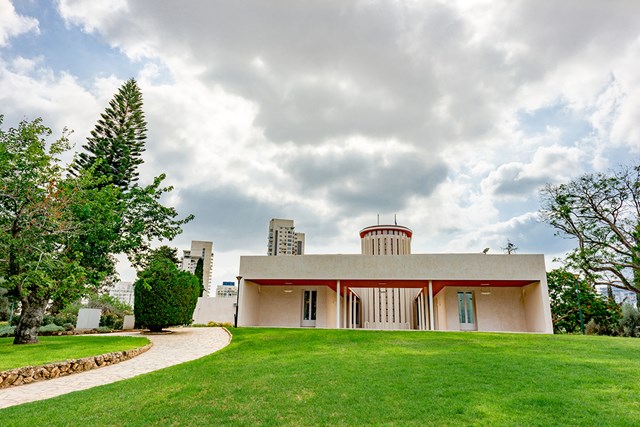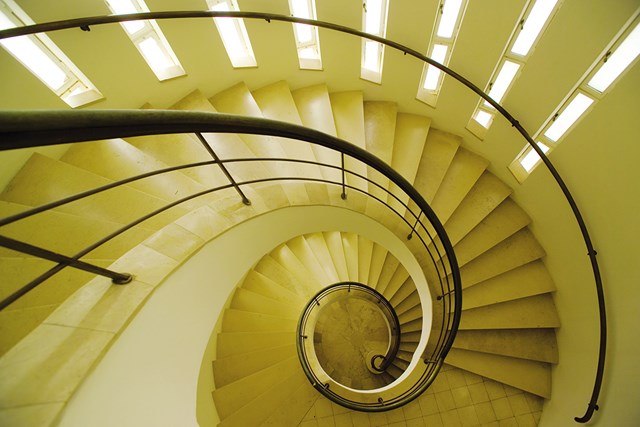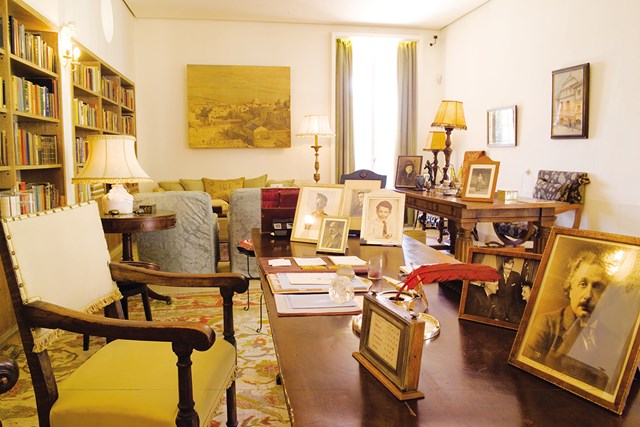
Villa Weizmann on the Weizmann Institute [campus], today.
The patron/artist relationship touches on one of the most complex issues in the architectural profession. In contrast to any other art work where the creative aspirations of the artist constitute the main functional medium, architecture focuses on the client’s ambition, particularly in relation to private houses, where a list of requests express his taste, dreams, social status and lifestyle.
This research deals with the influence of Vera Weizmann, wife of Israel’s first President, concerning the visual aspects of their home in Rehovot, designed between 1934-1937 by Erich Mendelsohn.
Vera’s impact on the design of Weizmann House and its internal organization stands out with regard to Erich Mendelsohn - who, when designing the house was already a world-renowned architect with a recognized and respected style. Her involvement is also evident in the north facing garden, where her world view contradicts that of the prestigious architect selected to design the house, who strove to deliver oriental expressions in order to set the building in the local context.

Erich Mendelsohn’s typical staircase in Villa Weizmann, Rehovot.
It is important to note that the President entrusted all progress in connection with the architect to Vera (who gave up her career as a physician for his political involvement), avoiding any interference in the design and construction, apart from matters relating to money.
Vera’s most obvious intervention led to a conflict with Mendelsohn’s minimalist structure in the rose-garden where guests were received, the stairs leading to the entry hall and, actually, the overall interior look with its abundance of design details, especially collected items, which for Vera carried cultural significance.
As a modernist, Mendelsohn strove to create a functional building that responded to the surroundings and the climate, using a design language that included visual representatives of the environment. However, Vera’s pressure forced him to reluctantly accept the flower garden intended to lengthen the brief Israeli spring flowering with imported plants.
The colorful blooming suited her romantic disposition that found expression in a Western, Edwardian style, adding a personal touch to the “alien” building, opposing Mendelsohn’s ambition to imbue it with an Eastern interpretation.
The interior design on all floors was treated in the same way, apart from the Eastern reception room, with colonial collectible items decorating the first floor, used for public functions and formal hospitality. In Vera’s opinion, it gave a colonial touch to the expression of the family’s cultural status. Likewise, items imported from England were placed in the salon, the dining room and the library.

The library - a remnant of Vera Weizmann’s influence on the interior design of Villa Weizmann.
And thus, the salon became a treasure chest similar to the European drawing room, expressing Vera’s world view as an art collector who later influenced not only the spatial design of other collectors, but also other house owners whose homes had been designed by Mendelsohn, thus enriching his resume.
Some of Chaim Weizmann’s close circle viewed Vera’s outspoken intervention as an intrusion on a formal domain that later became a battle field when she insisted that architect and client relationship must be a two-way dialogue.
A special chapter of the research was devoted to the subject of financing the collection, while Vera, daughter of one of the wealthiest Jewish families in Rostov (her birth city in White Russia), constitutes an example of her view point reflecting wealthy European drawing rooms.
The characteristic design of Vera’s Habitus in terms of Bourdieu’s theory of living space, finds expression in the villa that has recently become a museum at the Weizmann Institute: Her dressing room, which served as a refreshing room for visitors before formal meetings, exhibits personal items belonging to Vera and Chaim Weizmann, as well as family photographs that convey the spirit of the time. Thus, while the political image of Chaim Weizmann - appointed first State President in 1948 - overshadowed Vera’s career as a doctor, she stood her ground with regard to her right to design everything related to their mutual home.
Weizmann, who was very proud of the final result, used to praise the appearance of the house and garden, emphasizing the fact that it was his wife’s achievement as she had imbued it with her personal world view, from the selection of the site in a neglected orchard, which later became one of the most influential institutions - the Weizmann Institute.
Shoshana Harari: Research study for a Master’s Degree in The History of Art and Visual Culture - Arts Department, Faculty of Humanities and Social Sciences, Ben Gurion University of the Negev. Tutor: Dr. Sarah Offenberg.
